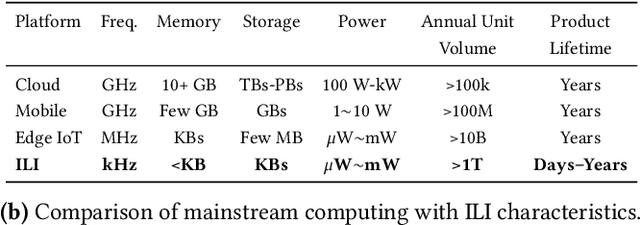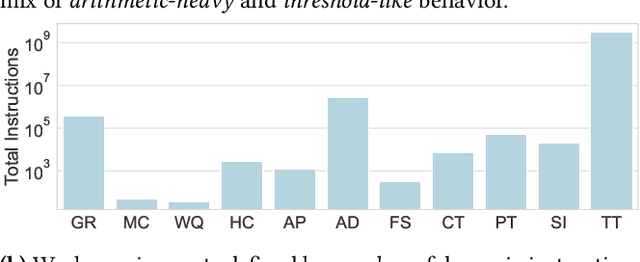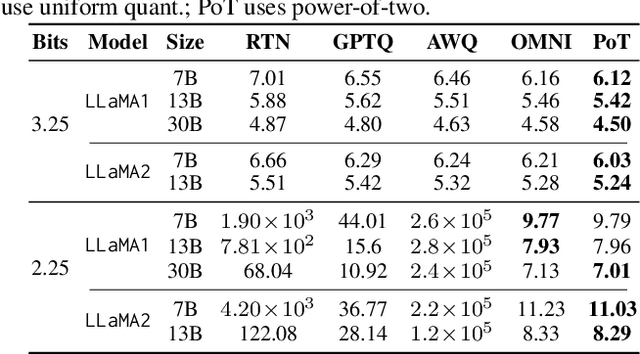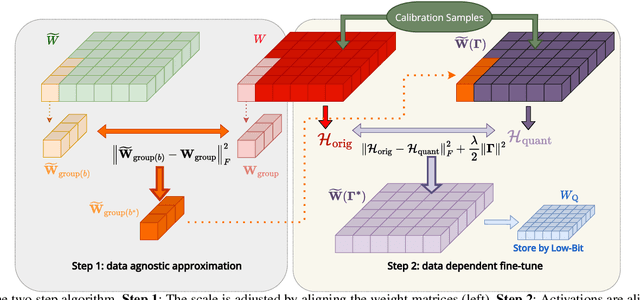Jerry Huang
Audited Skill-Graph Self-Improvement for Agentic LLMs via Verifiable Rewards, Experience Synthesis, and Continual Memory
Dec 28, 2025Abstract:Reinforcement learning is increasingly used to transform large language models into agentic systems that act over long horizons, invoke tools, and manage memory under partial observability. While recent work has demonstrated performance gains through tool learning, verifiable rewards, and continual training, deployed self-improving agents raise unresolved security and governance challenges: optimization pressure can incentivize reward hacking, behavioral drift is difficult to audit or reproduce, and improvements are often entangled in opaque parameter updates rather than reusable, verifiable artifacts. This paper proposes Audited Skill-Graph Self-Improvement (ASG-SI), a framework that treats self-improvement as iterative compilation of an agent into a growing, auditable skill graph. Each candidate improvement is extracted from successful trajectories, normalized into a skill with an explicit interface, and promoted only after passing verifier-backed replay and contract checks. Rewards are decomposed into reconstructible components derived from replayable evidence, enabling independent audit of promotion decisions and learning signals. ASG-SI further integrates experience synthesis for scalable stress testing and continual memory control to preserve long-horizon performance under bounded context. We present a complete system architecture, threat model, and security analysis, and provide a fully runnable reference implementation that demonstrates verifier-backed reward construction, skill compilation, audit logging, and measurable improvement under continual task streams. ASG-SI reframes agentic self-improvement as accumulation of verifiable, reusable capabilities, offering a practical path toward reproducible evaluation and operational governance of self-improving AI agents.
Sublinear iterations can suffice even for DDPMs
Nov 06, 2025Abstract:SDE-based methods such as denoising diffusion probabilistic models (DDPMs) have shown remarkable success in real-world sample generation tasks. Prior analyses of DDPMs have been focused on the exponential Euler discretization, showing guarantees that generally depend at least linearly on the dimension or initial Fisher information. Inspired by works in log-concave sampling (Shen and Lee, 2019), we analyze an integrator -- the denoising diffusion randomized midpoint method (DDRaM) -- that leverages an additional randomized midpoint to better approximate the SDE. Using a recently-developed analytic framework called the "shifted composition rule", we show that this algorithm enjoys favorable discretization properties under appropriate smoothness assumptions, with sublinear $\widetilde{O}(\sqrt{d})$ score evaluations needed to ensure convergence. This is the first sublinear complexity bound for pure DDPM sampling -- prior works which obtained such bounds worked instead with ODE-based sampling and had to make modifications to the sampler which deviate from how they are used in practice. We also provide experimental validation of the advantages of our method, showing that it performs well in practice with pre-trained image synthesis models.
AAGATE: A NIST AI RMF-Aligned Governance Platform for Agentic AI
Oct 29, 2025Abstract:This paper introduces the Agentic AI Governance Assurance & Trust Engine (AAGATE), a Kubernetes-native control plane designed to address the unique security and governance challenges posed by autonomous, language-model-driven agents in production. Recognizing the limitations of traditional Application Security (AppSec) tooling for improvisational, machine-speed systems, AAGATE operationalizes the NIST AI Risk Management Framework (AI RMF). It integrates specialized security frameworks for each RMF function: the Agentic AI Threat Modeling MAESTRO framework for Map, a hybrid of OWASP's AIVSS and SEI's SSVC for Measure, and the Cloud Security Alliance's Agentic AI Red Teaming Guide for Manage. By incorporating a zero-trust service mesh, an explainable policy engine, behavioral analytics, and decentralized accountability hooks, AAGATE provides a continuous, verifiable governance solution for agentic AI, enabling safe, accountable, and scalable deployment. The framework is further extended with DIRF for digital identity rights, LPCI defenses for logic-layer injection, and QSAF monitors for cognitive degradation, ensuring governance spans systemic, adversarial, and ethical risks.
Lifetime-Aware Design of Item-Level Intelligence
Sep 09, 2025



Abstract:We present FlexiFlow, a lifetime-aware design framework for item-level intelligence (ILI) where computation is integrated directly into disposable products like food packaging and medical patches. Our framework leverages natively flexible electronics which offer significantly lower costs than silicon but are limited to kHz speeds and several thousands of gates. Our insight is that unlike traditional computing with more uniform deployment patterns, ILI applications exhibit 1000X variation in operational lifetime, fundamentally changing optimal architectural design decisions when considering trillion-item deployment scales. To enable holistic design and optimization, we model the trade-offs between embodied carbon footprint and operational carbon footprint based on application-specific lifetimes. The framework includes: (1) FlexiBench, a workload suite targeting sustainability applications from spoilage detection to health monitoring; (2) FlexiBits, area-optimized RISC-V cores with 1/4/8-bit datapaths achieving 2.65X to 3.50X better energy efficiency per workload execution; and (3) a carbon-aware model that selects optimal architectures based on deployment characteristics. We show that lifetime-aware microarchitectural design can reduce carbon footprint by 1.62X, while algorithmic decisions can reduce carbon footprint by 14.5X. We validate our approach through the first tape-out using a PDK for flexible electronics with fully open-source tools, achieving 30.9kHz operation. FlexiFlow enables exploration of computing at the Extreme Edge where conventional design methodologies must be reevaluated to account for new constraints and considerations.
Fortifying the Agentic Web: A Unified Zero-Trust Architecture Against Logic-layer Threats
Aug 17, 2025Abstract:This paper presents a Unified Security Architecture that fortifies the Agentic Web through a Zero-Trust IAM framework. This architecture is built on a foundation of rich, verifiable agent identities using Decentralized Identifiers (DIDs) and Verifiable Credentials (VCs), with discovery managed by a protocol-agnostic Agent Name Service (ANS). Security is operationalized through a multi-layered Trust Fabric which introduces significant innovations, including Trust-Adaptive Runtime Environments (TARE), Causal Chain Auditing, and Dynamic Identity with Behavioral Attestation. By explicitly linking the LPCI threat to these enhanced architectural countermeasures within a formal security model, we propose a comprehensive and forward-looking blueprint for a secure, resilient, and trustworthy agentic ecosystem. Our formal analysis demonstrates that the proposed architecture provides provable security guarantees against LPCI attacks with bounded probability of success.
Parity Requires Unified Input Dependence and Negative Eigenvalues in SSMs
Aug 10, 2025Abstract:Recent work has shown that LRNN models such as S4D, Mamba, and DeltaNet lack state-tracking capability due to either time-invariant transition matrices or restricted eigenvalue ranges. To address this, input-dependent transition matrices, particularly those that are complex or non-triangular, have been proposed to enhance SSM performance on such tasks. While existing theorems demonstrate that both input-independent and non-negative SSMs are incapable of solving simple state-tracking tasks, such as parity, regardless of depth, they do not explore whether combining these two types in a multilayer SSM could help. We investigate this question for efficient SSMs with diagonal transition matrices and show that such combinations still fail to solve parity. This implies that a recurrence layer must both be input-dependent and include negative eigenvalues. Our experiments support this conclusion by analyzing an SSM model that combines S4D and Mamba layers.
Calibrated Language Models and How to Find Them with Label Smoothing
Aug 01, 2025Abstract:Recent advances in natural language processing (NLP) have opened up greater opportunities to enable fine-tuned large language models (LLMs) to behave as more powerful interactive agents through improved instruction-following ability. However, understanding how this impacts confidence calibration for reliable model output has not been researched in full. In this work, we examine various open-sourced LLMs, identifying significant calibration degradation after instruction tuning in each. Seeking a practical solution, we look towards label smoothing, which has been shown as an effective method to regularize for overconfident predictions but has yet to be widely adopted in the supervised fine-tuning (SFT) of LLMs. We first provide insight as to why label smoothing is sufficient to maintain calibration throughout the SFT process. However, settings remain where the effectiveness of smoothing is severely diminished, in particular the case of large vocabulary LLMs (LV-LLMs). We posit the cause to stem from the ability to become over-confident, which has a direct relationship with the hidden size and vocabulary size, and justify this theoretically and experimentally. Finally, we address an outstanding issue regarding the memory footprint of the cross-entropy loss computation in the label smoothed loss setting, designing a customized kernel to dramatically reduce memory consumption without sacrificing speed or performance in comparison to existing solutions for non-smoothed losses.
PoTPTQ: A Two-step Power-of-Two Post-training for LLMs
Jul 16, 2025



Abstract:Large Language Models (LLMs) have demonstrated remarkable performance across various natural language processing (NLP) tasks. However, their deployment is challenging due to the substantial computational resources required. Power-of-two (PoT) quantization is a general tool to counteract this difficulty. Albeit previous works on PoT quantization can be efficiently dequantized on CPUs using fixed-point addition, it showed less effectiveness on GPUs. The reason is entanglement of the sign bit and sequential bit manipulations needed for dequantization. We propose a novel POT quantization framework for LLM weights that (i) outperforms state-of-the-art accuracy in extremely low-precision number formats, and (ii) enables faster inference through more efficient dequantization. To maintain the accuracy of the quantized model, we introduce a two-step post-training algorithm: (i) initialize the quantization scales with a robust starting point, and (ii) refine these scales using a minimal calibration set. The performance of our PoT post-training algorithm surpasses the current state-of-the-art in integer quantization, particularly at low precisions such as 2- and 3-bit formats. Our PoT quantization accelerates the dequantization step required for the floating point inference and leads to $3.67\times$ speed up on a NVIDIA V100, and $1.63\times$ on a NVIDIA RTX 4090, compared to uniform integer dequantization.
A Novel Zero-Trust Identity Framework for Agentic AI: Decentralized Authentication and Fine-Grained Access Control
May 25, 2025Abstract:Traditional Identity and Access Management (IAM) systems, primarily designed for human users or static machine identities via protocols such as OAuth, OpenID Connect (OIDC), and SAML, prove fundamentally inadequate for the dynamic, interdependent, and often ephemeral nature of AI agents operating at scale within Multi Agent Systems (MAS), a computational system composed of multiple interacting intelligent agents that work collectively. This paper posits the imperative for a novel Agentic AI IAM framework: We deconstruct the limitations of existing protocols when applied to MAS, illustrating with concrete examples why their coarse-grained controls, single-entity focus, and lack of context-awareness falter. We then propose a comprehensive framework built upon rich, verifiable Agent Identities (IDs), leveraging Decentralized Identifiers (DIDs) and Verifiable Credentials (VCs), that encapsulate an agents capabilities, provenance, behavioral scope, and security posture. Our framework includes an Agent Naming Service (ANS) for secure and capability-aware discovery, dynamic fine-grained access control mechanisms, and critically, a unified global session management and policy enforcement layer for real-time control and consistent revocation across heterogeneous agent communication protocols. We also explore how Zero-Knowledge Proofs (ZKPs) enable privacy-preserving attribute disclosure and verifiable policy compliance. We outline the architecture, operational lifecycle, innovative contributions, and security considerations of this new IAM paradigm, aiming to establish the foundational trust, accountability, and security necessary for the burgeoning field of agentic AI and the complex ecosystems they will inhabit.
FinSage: A Multi-aspect RAG System for Financial Filings Question Answering
Apr 20, 2025Abstract:Leveraging large language models in real-world settings often entails a need to utilize domain-specific data and tools in order to follow the complex regulations that need to be followed for acceptable use. Within financial sectors, modern enterprises increasingly rely on Retrieval-Augmented Generation (RAG) systems to address complex compliance requirements in financial document workflows. However, existing solutions struggle to account for the inherent heterogeneity of data (e.g., text, tables, diagrams) and evolving nature of regulatory standards used in financial filings, leading to compromised accuracy in critical information extraction. We propose the FinSage framework as a solution, utilizing a multi-aspect RAG framework tailored for regulatory compliance analysis in multi-modal financial documents. FinSage introduces three innovative components: (1) a multi-modal pre-processing pipeline that unifies diverse data formats and generates chunk-level metadata summaries, (2) a multi-path sparse-dense retrieval system augmented with query expansion (HyDE) and metadata-aware semantic search, and (3) a domain-specialized re-ranking module fine-tuned via Direct Preference Optimization (DPO) to prioritize compliance-critical content. Extensive experiments demonstrate that FinSage achieves an impressive recall of 92.51% on 75 expert-curated questions derived from surpasses the best baseline method on the FinanceBench question answering datasets by 24.06% in accuracy. Moreover, FinSage has been successfully deployed as financial question-answering agent in online meetings, where it has already served more than 1,200 people.
 Add to Chrome
Add to Chrome Add to Firefox
Add to Firefox Add to Edge
Add to Edge